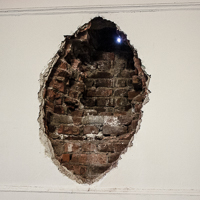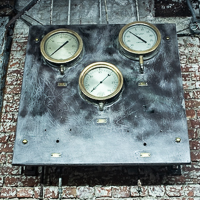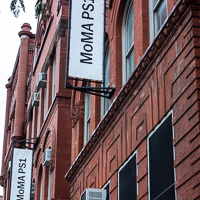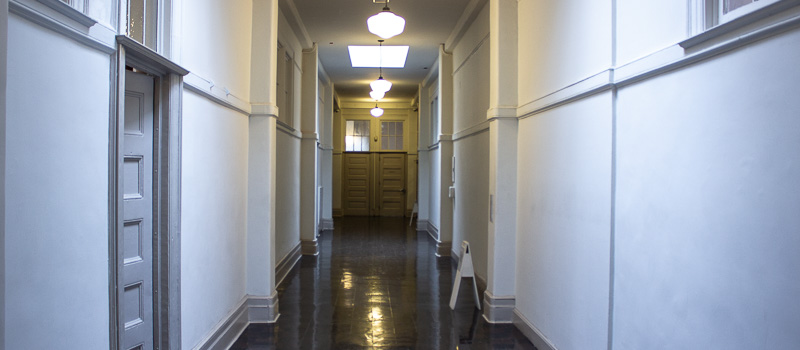
About the Museum
The Museum of Modern Art flirts with contemporary art in its primary, midtown location, but generally rests on its Modernist expertise. Most responsibility for exploring the exciting world of contemporary art is left to the MoMA's partner museum in Long Island City. For over 40 years, the institution now called MoMA PS1 has been at the center of New York's contemporary art scene, hosting exhibitions of new and established contemporary artists in one of the most compelling repurposed spaces in Queens. The former First Ward Schoolhouse maintains much of the feel of a public school, with classrooms turned into studios, gallery spaces, and offices. Exhibitions change regularly and the space hosts a variety of popular community events, so watch the calendar.

What You Will See
The museum is its own permanent collection. Beginning with one of the first exhibitions at the museum in 1976, PS1 has repeatedly invited artists to install works specific to the space, and has often left them. Some of these works are actively maintained, while others, particularly those in the stairwells, have been allowed to naturally decay with time and wear. Building tours highlight many of these works, which are often the only ones on display when the museum is between major exhibitions--worth a short visit, but the museum is best when its filled with the contemporary art that put it on the map. Contemporary Art is always a risk--you may love it or you may hate it. But that is the adventure. Plan on coming back with each new exhibition, if you don't like one, you'll like the next one.

Why You Should Go
Many visitors head to the MoMA expecting PS1. But, depending on who you ask, the period we call <i>Modern</i> ended in the 1970s, and while the Museum of Modern Art does not follow that exact deadline with every exhibit, its strength lay more in the 20th century than the 21st. Like the Met did with the Breuer, the MoMA partnered what was once called the PS1 Contemporary Art Center, to supplement its offerings. As PS1 ages, many of its installations become history, but its exhibitions remain fresh, new, risky, and intriguing. If you can only visit one, hit the MoMA, but follow it closely with a visit to PS1. This is the result of the revolution in Modern Art chronicled at the MoMA.








